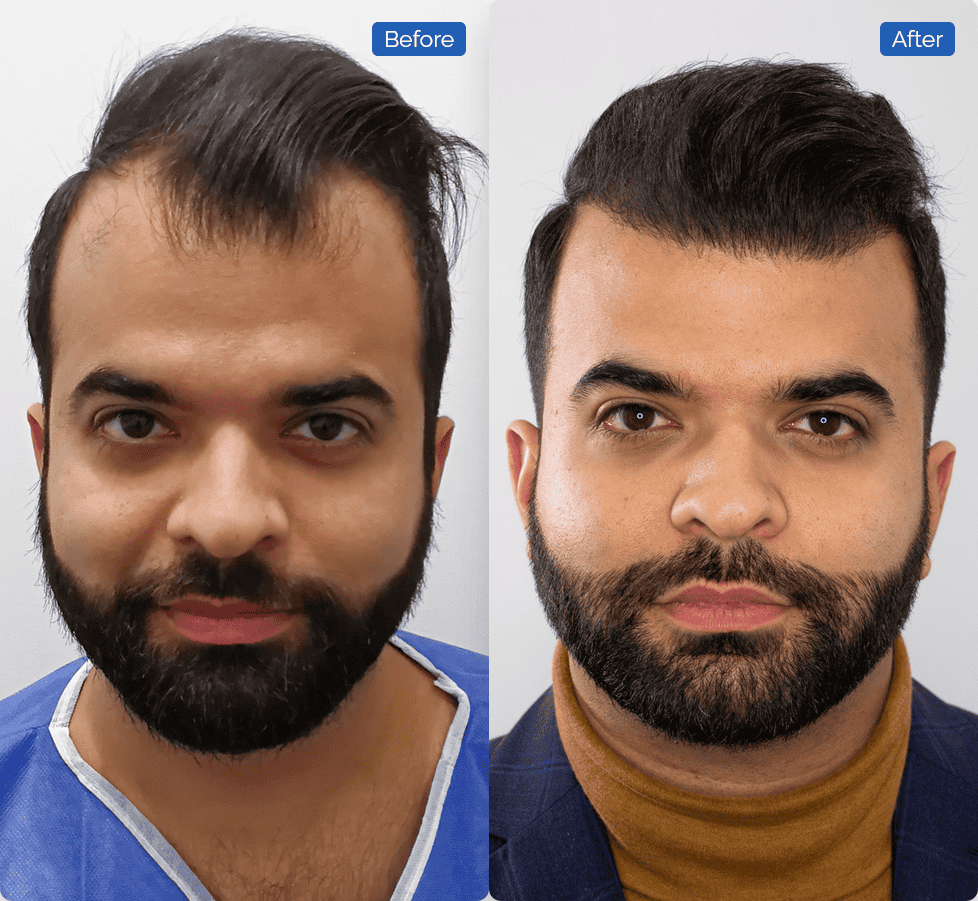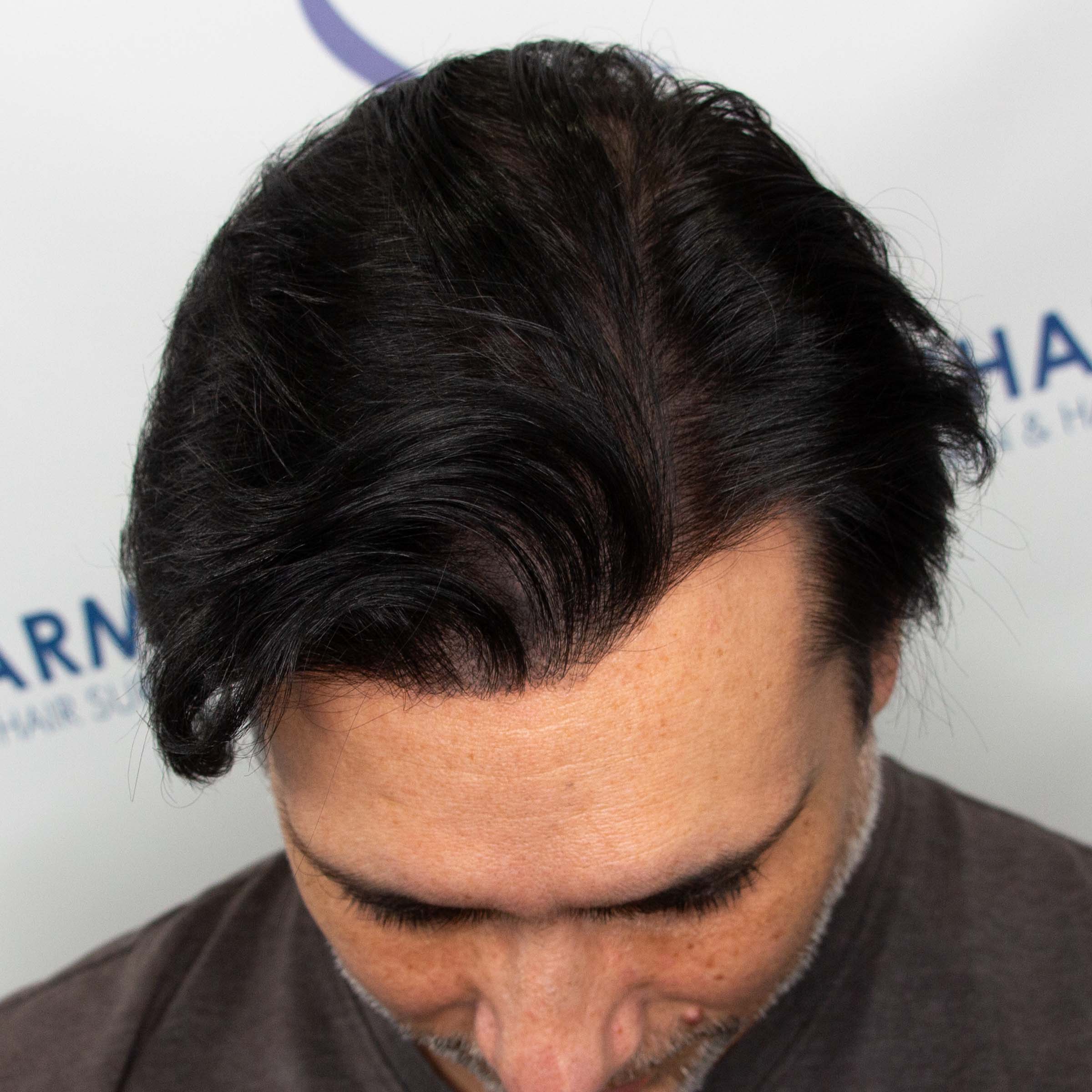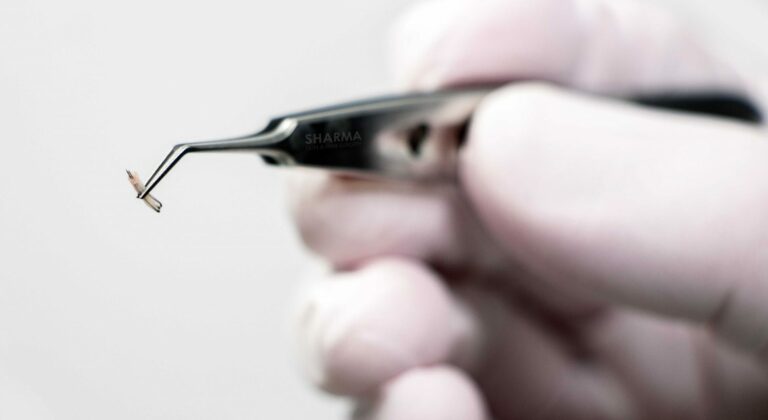When considering a hair transplant, one of the most crucial questions is how long the results will last. This is a key factor patients weigh against the cost of the procedure. While some treatments offer short-lived benefits, hair transplant surgery stands out as one of the only solutions providing a long-term, permanent solution.
Understanding the longevity of hair transplant outcomes and the factors that influence them is essential for making an informed decision. This article will explore the permanence of hair transplants, what to expect, and how to maintain your results for years to come, helping you achieve the best aesthetic outcome and, in turn, boost your confidence.
How long do hair transplants last?
Hair transplants are designed to be a permanent solution to hair loss. The transplanted hair follicles are taken from areas of the scalp that are resistant to balding, typically the back and sides of the head. In rare situations and at the surgeon’s discretion, body hair may be utilized, but this is assessed on a case-by-case basis after a thorough examination. These follicles from the “safe donor area” maintain their genetic resistance to hair loss even when moved to a new location.
However, it’s important to note that not all transplanted hair grafts may survive the procedure. Like all hair follicles, they go through cycles of rest (telogen), growth (anagen), and shedding (exogen). What’s fascinating about hair is that it’s a triphasic organ, cycling through these stages continually.
Factors affecting hair transplant longevity
While hair transplants are considered permanent, the natural aging process and continued hair loss in non-transplanted areas may affect the overall appearance of your hairline over time. This is why it’s crucial to consider all factors when planning your hair restoration journey and, most importantly, follow your doctor’s advice about maintaining hair that can be conserved using medications if necessary.
Several factors can influence how long hair transplant results last:
The transplant technique used
The choice between Follicular Unit Extraction (FUE) and Follicular Unit Transplantation (FUT) can impact the longevity of results. Both FUE and FUT have high graft survival rates if performed by a skilled surgeon with many years of experience and when patient selection is performed appropriately. Not everyone is a candidate for FUT, and not everyone is a candidate for FUE. Some patients are candidates for both and may have both procedures in their lifetime to maximize the yield of their safe donor hair.
FUE vs FUT: What’s the difference?The quality and skill of the surgeon
An experienced surgeon’s expertise in graft harvesting, preservation, and placement significantly affects the survival rate of transplanted hair follicles, directly impacting the longevity of results. It’s essential to inquire about the nursing and technical staff that the surgeon uses. Even if the surgeon harvests the hair using either the FUE or FUT technique well, if the grafts are handled and implanted with improper, rushed techniques or by inexperienced staff, it may lead to poor growth or unsatisfactory results. The surgery must only be performed by personnel who have years of experience, excellent hand-eye coordination, and the ability to handle microscopic grafts with precision.
The characteristics of the donor hair
The quality, thickness, and density of the donor hair play a crucial role in the longevity of transplant results. Stronger, healthier donor hair typically leads to more durable and natural-looking outcomes. Genetics, sex, age, and ethnicity all play an important role in the quality and density of donor hair. This is why it’s so important to have a hands-on examination, as the way the scalp feels, moves, and the actual density plays a pivotal role in surgical planning.
The patient’s age and overall health
Younger patients with good overall health often experience better, longer-lasting results. However, they may also need to consider future hair loss patterns when planning their transplant. In today’s world, as we are in better health than ever due to modern medicine, age is seldom a factor provided the underlying health, donor density, and medical history are acceptable.
The patient’s genetics and pattern of hair loss
Genetic factors influencing hair loss progression can affect the long-term appearance of transplanted hair. Understanding your family history of hair loss can help predict future needs. For example, somebody with a strong family history of genetic hair loss who undergoes hair transplantation surgery without opting to protect unaffected areas has a higher chance of those grafts being affected in the future. They should consider modalities to hedge against future hair loss, which should be carefully discussed with the surgeon.
Post-operative care and lifestyle
Proper aftercare, a healthy lifestyle, and avoiding habits detrimental to hair health (like smoking) can significantly extend the lifespan of transplanted hair and overall results. Typically, post-operative instructions are provided in written and verbal form, and the patient is seen the following day. Any deviation from these policies and advice, such as returning to exercise too soon, can impact the results due to graft dislodgement or inadequate healing.
Hair transplant results: What to expect
The journey to your final hair transplant results is a process that unfolds over several months. Immediately after surgery, you may notice some scabbing and redness, which typically subsides within a week or two. Around 2-3 weeks post-surgery, it’s common for the transplanted hair to fall out. This is a normal part of the process and not a cause for concern.
New hair growth usually begins around 3-4 months after the procedure, with significant improvements visible by 6-9 months. Full results are typically seen 12-18 months post-surgery, as the transplanted hair continues to thicken and mature.

We talked about the three cycles of hair growth: anagen, telogen, and exogen. When we take hair from the back, we have no idea which phase the donor grafts are in. So when we implant them into the recipient area, some will continue along their natural cycles, while others will restart a new cycle. This is why it can often take a while for the full results to be seen as all the cycles catch up.
Sometimes after hair transplantation surgery, there may be a period of shedding of the transplanted hair and even the hair around the surgical site which has not been transplanted. This is also sometimes referred to as surgical shock loss, where hair follicles can shift from the growth phase (anagen) to the resting phase (telogen). Your surgeon will often advise clients who might be at higher risk about modalities and therapies to help with this. The good news is that if this does happen, it is short-lived, as once the hair enters the next cycle, everything will grow back normally.
View our comprehensive recovery timelineEnhancing and maintaining transplant results
To maximize the longevity of your hair transplant results:
- Maintain a healthy lifestyle: A balanced diet, regular exercise, and stress management can promote overall hair health.
- Follow a proper hair care routine: Use gentle, sulfate-free shampoos and avoid harsh chemical treatments.
- Consider touch-up procedures: Some patients opt for minor touch-ups to address ongoing hair loss or refine their results. This is very normal as all cells in the body will be subject to aging, and even without genetic hair loss, we all experience some thinning with age.
- Utilize medications: Minoxidil and Finasteride can help maintain transplanted hair and slow further loss in non-transplanted areas. Consult with your doctor about these options.
Is it possible that further hair transplants will be needed?
While hair transplants provide a long-lasting solution, it’s possible that your first procedure won’t be your last. Some patients may require multiple “sessions” to achieve their desired results, especially if they have extensive hair loss. Additionally, as natural hair loss progresses, some individuals may choose to undergo further transplants to maintain their appearance.
If you’re considering a hair transplant or have questions about the longevity of results, we encourage you to book a consultation with Dr Sharma and his experienced team. We can assess your individual needs and create a personalized treatment plan to help you achieve the long-lasting, natural-looking results you desire.
BOOK NOW
Talk to a Hair Transplant Expert
Are you looking for the most effective treatment plan to reverse the effects of hair loss? Dr. Sharma has a long-lasting commitment to offering the best services in the industry. Not only is he experienced with hair loss treatment, but he is passionate about helping each patient receive excellent results.

SOURCES
- Rassman WR, et al. (2016). Hair Transplantation, 5e. Jaypee Brothers Medical Publishers.
- https://pubmed.ncbi.nlm.nih.gov/21792780/
- https://pubmed.ncbi.nlm.nih.gov/24017988/
- https://pubmed.ncbi.nlm.nih.gov/29797431/
- https://pubmed.ncbi.nlm.nih.gov/16039422/
- https://pubmed.ncbi.nlm.nih.gov/26370653/
- https://www.sciencedirect.com/science/article/pii/S108700241530530X
- https://pubmed.ncbi.nlm.nih.gov/29064980/
- https://www.cyberderm.net/secure-uploads/attachments/ckobm0zgf00dgr42bq0sige6v-4-2-2-androgenetic-alopecia-lolli-2017-reviewlolli2017-article-androgeneticalopeciaareview.pdf
- https://pubmed.ncbi.nlm.nih.gov/16307704/
Share this:
Medically reviewed by
Updated on
Have a question?
Find out how we can help you look feel your absolute best
Contact us 780-476-7970


